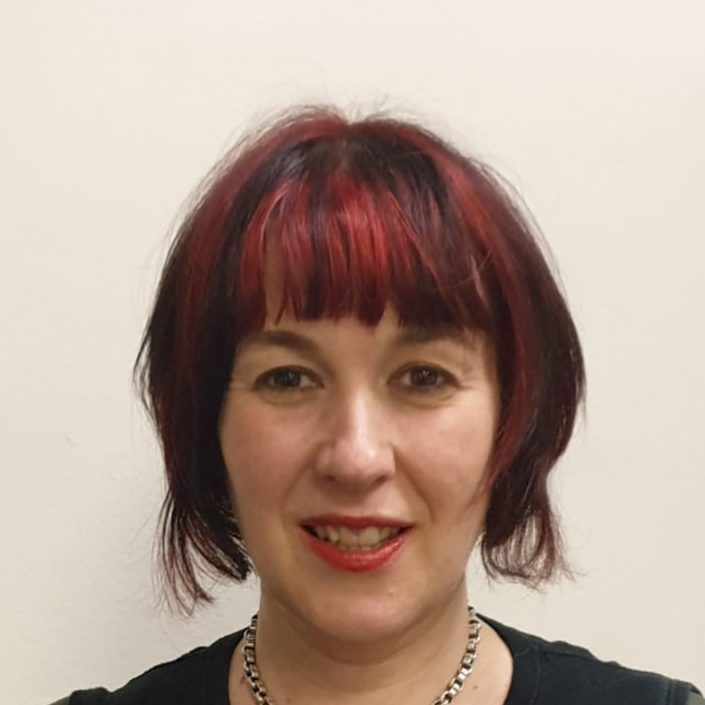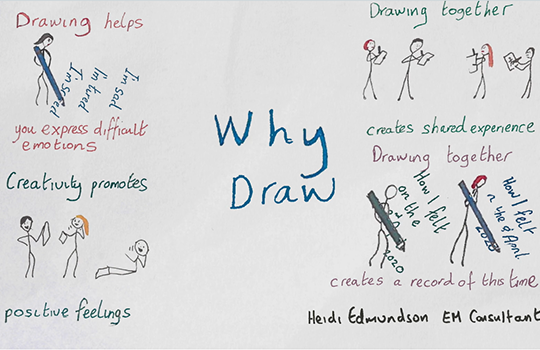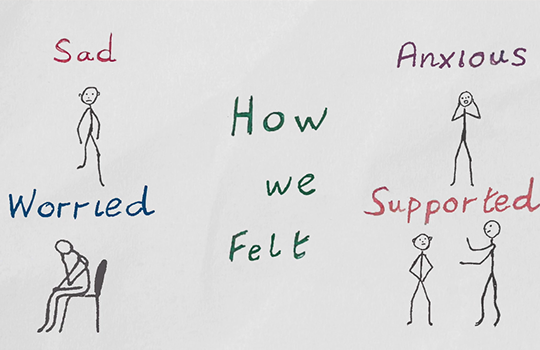 As we welcomed in the New Year most of us had never heard of covid-19, let alone had any idea that our lives were going to be turned upside down by it in 2020.
As we welcomed in the New Year most of us had never heard of covid-19, let alone had any idea that our lives were going to be turned upside down by it in 2020.
Prior to the pandemic I had developed a passion for staff wellbeing. In particular I was interested in facilitating wellbeing through creativity and I regularly delivered sessions in my department based on the benefits of “fun and laughter.”
At the start of the pandemic addressing staff wellness seemed daunting. Initially, I was concerned that using creativity might seem trivial or lightweight, and many of my previous initiatives could not be run due to the need for social distancing.
However, guidance from The British Psychological Society on how to look after your team during both the active and recovery stages of the pandemic suggested actively encouraging expression of concerns and fears from staff.
Guidance from The COVID Trauma Response Working Group also stressed the importance of creating a “we’re all in this together” culture within the department.
Therefore, among all the other challenges, I felt that it was important to continue delivering the wellness sessions to the team and find a way of adapting them to the pandemic.
I ran weekly 20 minute sessions and used this time to remind everyone of what resources were available within the hospital. I also checked in on how everyone was feeling, inviting them to give me a number out of 10. Finally I asked everyone to draw how they felt.
This was a very simple task with no right or wrong. Drawing often enables people to express emotions that are difficult to say. For some drawing let them acknowledge or accept feelings that they were unaware that they had.
Drawing together also created a shared experience. It was a fun task and there was always a lot of laughter—which not only bonds people, but can also reduce anxiety and blood pressure.
I often introduced themes for the drawing task, such as how we felt, what we did to help us cope, and more lighthearted ones such as how we looked during lockdown. The sessions were sometimes emotional but some were uplifting.
After eight sessions I had over 100 drawings. I felt that it was important to save these and share them with everyone as a record of what we went through as a team so I had them made into a short animated film by a graphic designer.
Watching the film is an emotional experience for me and the first few times I cried. Many other members of the team expressed similar feelings. It is powerful to see how everyone’s drawings, when put together, tell a story.
No one knows what the future is going to bring but all of us are going to have a reaction to the last few months and what occurred. This is the time for reflection. We are dealing with something that we have never had to deal with before.
Creativity may seem trivial, insignificant even, in the face of everything that has just gone on. However, all forms of creativity can help us to express challenging feelings. Engaging with creative tasks is about engaging with the subconscious and they can reveal things that might otherwise remain hidden.
Creativity and art are one of the ways humankind makes sense of things, which is what we need at present both in the NHS and society in general.
Heidi Edmundson has worked in the NHS for over 20 years and for the last 10 has been a consultant in emergency medicine at Whittington Health in London. She is a passionate advocate for NHS staff wellness and its importance with regards to the individual, the workforce and the patients they care for. @heidi_ed
Competing interests: Heidi received a small amount of funding from Health Education England to assist with the running of another wellness project within her department.


